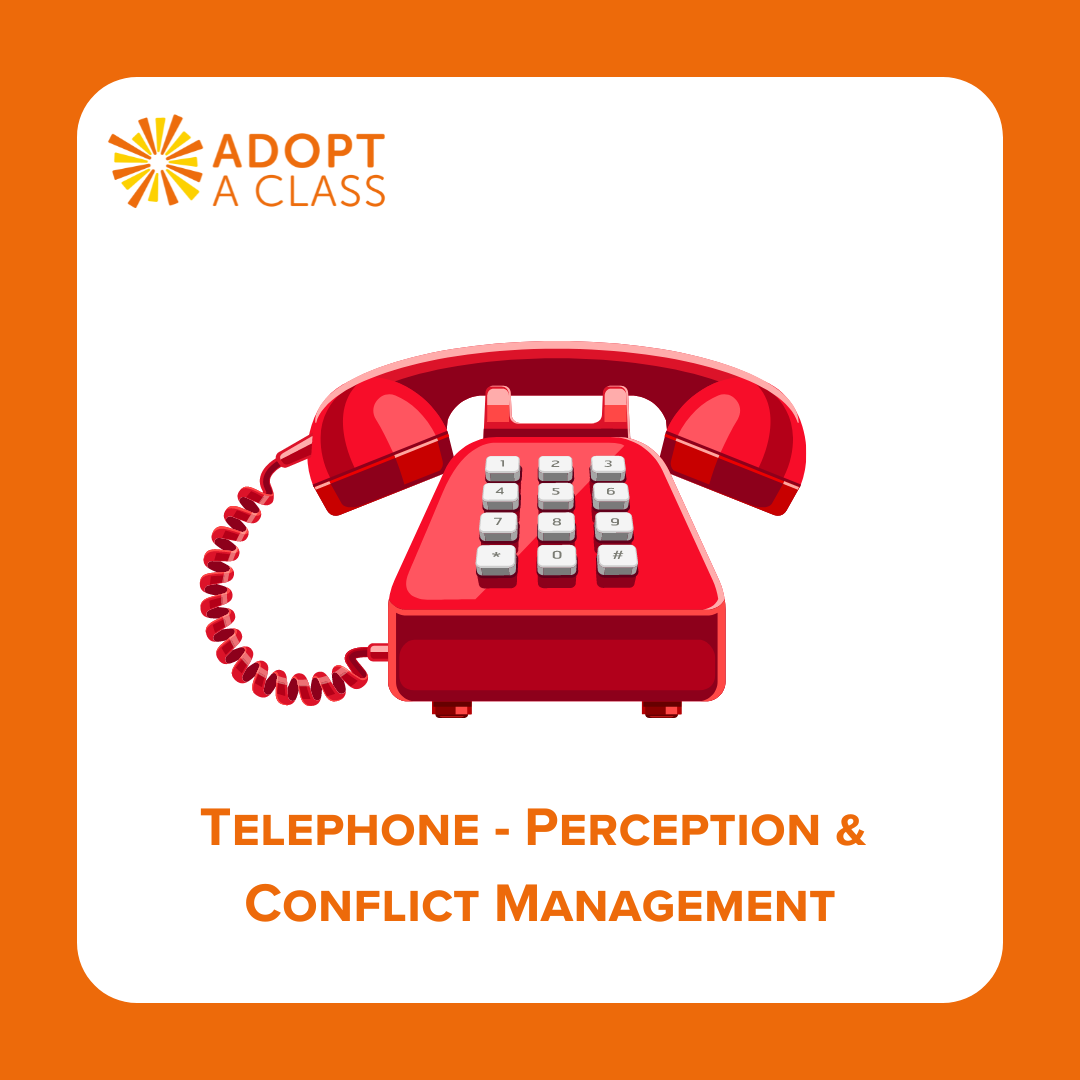Materials: Telephone Narrative Prompt (3rd-5th) or Telephone Narrative Prompt (6th-8th) ***NOTE: We suggest printing out one per mentor so that there are enough to pass around the classroom if needed and there is a Telephone Narrative Prompt for 3rd-5th and 6th-8th.
Instructions:
1. Based on the CRAMMS lesson by University of Oregon (Conflict Resolution Activities for Middle School Skill-Building), introduce the lesson, Telephone. Ask students if they have ever played the game Telephone before. What do they remember about the game? Explain to students that today they will be learning about questioning reliability and validity of information and rumors they hear, and how broken communication can lead to conflicts.
- – Make sure to fill in blanks on each BINGO sheet with things specifically about people on your mentoring team BEFOREHAND! This will ensure your team is ready for your visit and that students will need to talk with you all in order to win at BINGO.
2. Depending on the layout of your classroom, arrange seats in a large circle. If unable to arrange seats, have students stand in a large circle. Mentors should join the circle between students.
3. One mentor whispers a short narrative into the ear of the student sitting to their left. The narrative should be no more than 2-3 sentences. Use the narratives provided on the Telephone Narrative Prompts or mentors or students can create their own.
4. Ask that student whisper the same sentences, word for word, as best they can to the student to their left, and so on, until the tale reaches the last student in the circle. Everyone should hear and say the narrative once.
5. Ask the last student to hear the narrative say aloud what they were told.
6. Compare the last narrative to what the original narrative was. Have the
student or mentor say allowed the narrative with which you began.
- – How do the two narratives compare?
- – What, if anything, was a major shift or change in the narrative?
- – How does the changed narrative affect people’s feelings on the subject?
- – How would the changed narrative potentially lead to conflict?
7. Play multiple rounds starting at different places in the circle each time. Play each round using a different Telephone Narrative Prompt.
8.End the lesson asking students to reflect on the game.
- – How many people heard and repeated the sentences we actually began with? (See how early the communication broke down.)
- – How and why did the communication breakdown?Ask the person who contributed to the break down of the communication how and why it happened. Did they mishear something or was it intentional?
- – How might communicating like this lead to problems? Could this problem lead to conflict?
- – Have you ever been involved in a game of telephone in real life? What was that like?
- – What are some ways we can prevent miscommunications like this from happening?
- – Does miscommunication just happen in person?Where else can this happen? Can it happen online? Over text message?
- – How can students make sure what they hear or read is true before telling others about it or forming an opinion about someone or something?
Tips: Tie into the lesson and activity how broken communication can lead to conflicts. Is this just broken communication in person? Does this happen online? How do students make sure what they hear or read is true? If there are students in your class with the same name as in the prompts, please change them.
Download Telephone- Perception & Conflict Management Lesson here.



